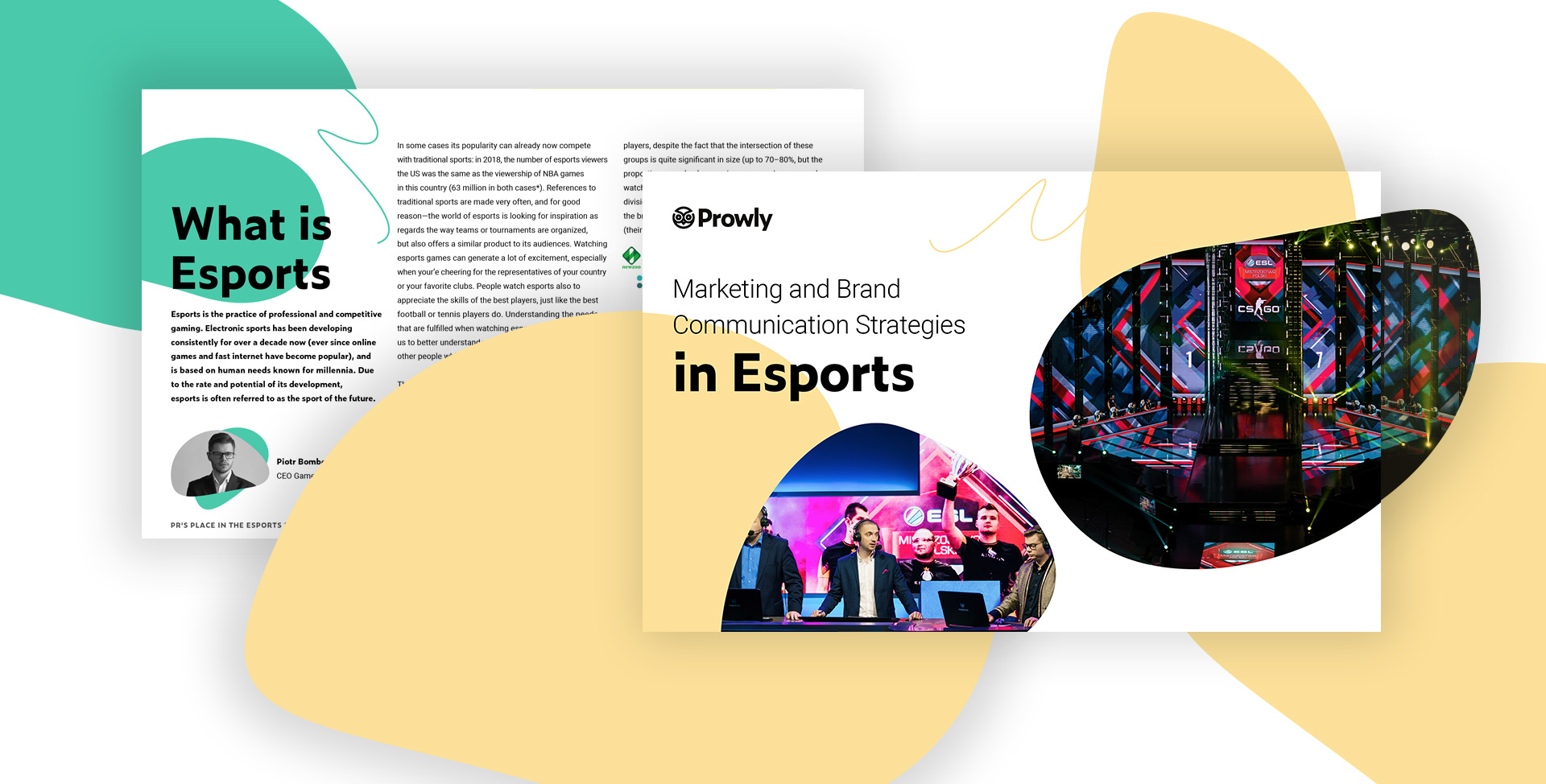Electronic sports have been fighting their way through in the entertainment industry for quite some time, and there are now more and more brands using them and entering this market as a way to “rejuvenate” their image. The game is worth the candle: two-digit increase in popularity, sold-out seats in stadiums around the world, annual prize pools of over EUR 100 million.
In our e-book we want to show you the areas that PR and marketing agencies should be interested in and present the people who are interested in addressing communication activities to this group. We have prepared it together with Foszer Sawicki, Mindspot Communication & Media agency and devils.one - esports organisation team.
Get your e-book
Non-endemic brands (this term will appear multiple times throughout our publication) are those for which esports and gaming are not main business pillars and whose core activity goes beyond the gaming world. And those are the ones that go into these fields more and more in their strategies when they think about activities addressed to younger audiences. Mercedes in its brilliant Grow Up in eSports campaign advertises itself using the values of esports activity. The German automaker challenges the stereotype of a gamer “who should grow up and start doing something more serious” and shows that the brand can relate to them.
The largest revenue streams come from sponsorships. This market is projected to grow to USD 655 million in total by 2020. It is also expected that new brands, especially non-endemics, will enter and invest in esports, which will further drive the growth in sponsorship revenues in the coming years.
While the esports business, in general, is quite complex, it can be basically broken down into 5 components: publishers & games, players & teams, competitions with tournaments and leagues, branding & advertising, and fans & esports consumers.
From our e-book you will learn:
- what esports is and how important it is in the entertainment business;
- where do PR and content fit on the esports map;
- whether it is worth going for streaming-based communication activities;
- how esports is helping brands achieve their business goals;
- which campaigns were distinguished by experts.
We invited there:
- Aleksander Szlachetko, from ESL Poland
- Milka Budimir, Coca-Cola
- Marek Spadło, Foszer Sawicki, devils.one
- Piotr Bombol, Gameset
- Anna Rozwandowicz, The Story Mob
- Michael Blount, Kazoo Communications
- Maciej Boroń, Tomasz Przeździecki, MediaCom
- Szymon Kubiak, devils.one
- Krzysztof Rygiel, Monday PR
Why esports?

“There are millions of people in Poland claiming to be gamers (16.4m) or hard gamers (3.5m). This community is very committed, which makes it a target group with a huge potential for brands like Sprite”
Milka Budimir, Senior Regional Brand Manager Coca-Cola TM, Central & Southern Europe at The Coca-Cola Company

“Non-endemic brands have traditionally struggled to get a meaningful foothold in esports, but here are more and more good examples to pick from: brands finding their way to esports fans' hearts through creating memorable content, brands that committed to investing so much they had to cut their commitments elsewhere, and brands that came here to dip a toe but stayed for good”
Anna Rozwandowicz, Co-Founder The Story Mob

"Any brand that is targeting people under 30, with a male skew, should be looking at esports as part of their digital strategy. The data on this audience being hyper-social, willing to engage digitally with brands and spend money on things they love can’t be argued with"
Michael Blount, Entertainment and Content Director, Kazoo Communications

